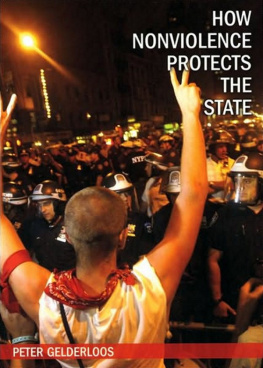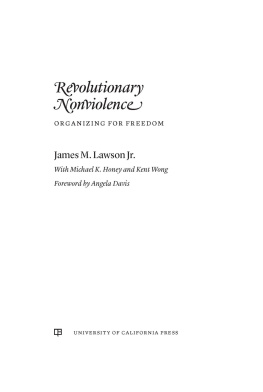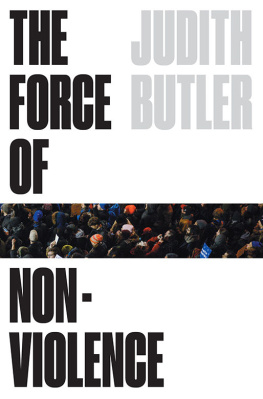Peter Gelderloos - The Failure of Nonviolence
Here you can read online Peter Gelderloos - The Failure of Nonviolence full text of the book (entire story) in english for free. Download pdf and epub, get meaning, cover and reviews about this ebook. year: 2017, publisher: Left Bank Books, genre: Politics. Description of the work, (preface) as well as reviews are available. Best literature library LitArk.com created for fans of good reading and offers a wide selection of genres:
Romance novel
Science fiction
Adventure
Detective
Science
History
Home and family
Prose
Art
Politics
Computer
Non-fiction
Religion
Business
Children
Humor
Choose a favorite category and find really read worthwhile books. Enjoy immersion in the world of imagination, feel the emotions of the characters or learn something new for yourself, make an fascinating discovery.
- Book:The Failure of Nonviolence
- Author:
- Publisher:Left Bank Books
- Genre:
- Year:2017
- Rating:5 / 5
- Favourites:Add to favourites
- Your mark:
- 100
- 1
- 2
- 3
- 4
- 5
The Failure of Nonviolence: summary, description and annotation
We offer to read an annotation, description, summary or preface (depends on what the author of the book "The Failure of Nonviolence" wrote himself). If you haven't found the necessary information about the book — write in the comments, we will try to find it.
The Failure of Nonviolence — read online for free the complete book (whole text) full work
Below is the text of the book, divided by pages. System saving the place of the last page read, allows you to conveniently read the book "The Failure of Nonviolence" online for free, without having to search again every time where you left off. Put a bookmark, and you can go to the page where you finished reading at any time.
Font size:
Interval:
Bookmark:

T HIS BOOK IS DEDICATED TO M ARIUS M ASON, E RIC M C D AVID, & ALL THOSE WHO SUPPORT THEM.
W HEN THEY POURED ACROSS THE BORDER
I WAS CAUTIONED TO SURRENDER,
THIS I COULD NOT DO;
I TOOK MY GUN AND VANISHED.
[...]
O H, THE WIND, THE WIND IS BLOWING,
THROUGH THE GRAVES THE WIND IS BLOWING,
FREEDOM SOON WILL COME;
THEN WELL COME FROM THE SHADOWS.
-Leonard Cohen, The Partisan
X|Introduction: Nonviolence has lost the debate
N ONVIOLENCE HAS LOST THE DEBATE. Over the last twenty years, more and more social movements and rebellions against oppression and exploitation have broken out across the world, and within these movements people have learned all over again that nonviolence does not work. They are learning that the histories of purported nonviolent victories have been falsified, that specific actions or methods that could be described as nonviolent work best when they are complemented by other actions or methods that are illegal and combative. They are learning that exclusive, dogmatic nonviolence does not stand a chance at achieving a revolutionary change in society, at getting to the roots of oppression and exploitation and bringing down those who are in power.
At best, nonviolence can oblige power to change its masks, to put a new political party on the throne and possibly expand the social sectors that are represented in the elite, without changing the fundamental fact that there is an elite that rules and benefits from the exploitation of everybody else. And if we look at all the major rebellions of the last two decades, since the end of the Cold War, it seems that nonviolence can only effect this cosmetic change if it has the support of a broad part of the eliteusually the media, the wealthy, and at least a part of the military, because nonviolent resistance has never been able to resist the full force of the State. When dissidents do not have this elite support, strict nonviolence seems like the surest way to kill a movement, as when pure nonviolence led to the total collapse of the anti-war movement in 2003 .
In dozens of new social movements around the world, people have gone into the streets for the first time thinking that nonviolence is the way, because contrary to the claims of many pacifists, our society teaches us that while violence may be acceptable for governments, people on the bottom who wish to change things must always be nonviolent. This is why from the Occupy Movement in the US to the plaza occupation movement in Spain to the student movement in the UK, tens of thousands of people who were participating in a struggle for the first time in their lives, who only knew about revolution and resistance from television or from public schools (which is to say, from the media or from the government) overwhelmingly believed in nonviolence. And around the world, experience taught many of these people that they were wrong, that the pacifists, together with the media and the government had lied to them, and in order to change anything, they had to fight back.
This has been a collective learning process that has taken place around the globe, and the direction of that process has overwhelmingly gone from nonviolence to a diversity of tacticsthe idea that we cannot impose a limitation of tactics or one method of struggle on an entire movement, that we need to be able to choose from a wide range of tactics, that struggles are more robust when such a variety of tactics are present, and that everybody needs to decide for themselves how to struggle (peaceful tactics, therefore, are included within a diversity of tactics, where nonviolence excludes all other tactics and methods).
Eight years ago, there were frequent debates between proponents of nonviolence and proponents of a diversity of tactics. In the fall of 2004 , I wrote How Nonviolence Protects the State, one of several similar polemics to appear at the time (the arguments I make in that book, as well as criticisms of it, are outlined in the appendix). In the climate of the antiglobalization movement, which was heavily skewed towards nonviolence thanks to the disappearance or institutionalization of the social movements that came before us, and thanks to the heavy NGO participation, the debate felt like an uphill battle, although most of us were aided and inspired by the discovery or republication of texts from earlier generations of struggle, like Ward Churchills Pacifism as Pathology or Frantz Fanons The Wretched of the Earth.
At that time, proponents of nonviolence frequently emerged from their ivory towers to debate with proponents of a diversity of tactics. But in the intervening years, something has changed. Insurrections have occurred around the world, while nonviolent movements have proven themselves stillborn or morally bankrupt (see Chapter ). Even within the confines of the antiglobalization movement, the most powerful and communicative protests were those that openly organized on the basis of a diversity of tactics, while the rebellions in the Global South that kept the movement alive were nothing close to pacifist.
Many of the proponents of nonviolence were drawing on a rich if somewhat flawed history of peaceful movements for change, like the Latin American solidarity movement in the US or the anti-militarist and anti-nuclear movements in Europe. But many of these older pacifists have disappeared, while those who have remained active were scarcely present in the emergence of the new nonviolent mass movements. In the face of its defeats, nonviolence nourished itself not in the experience of social movements, which repeatedly counseled against it, but rather anchored itself with the support of the mass media, the universities, wealthy benefactors, and governments themselves (see Chapter ). Nonviolence has become increasingly external to social movements, and imposed upon them.
As this has happened, direct debate between the idea of nonviolence and that of a diversity of tactics has become increasingly rare. The criticisms of nonviolence that were published in those years made a number of arguments that would have to be either rebutted or acknowledged for any honest debate to continue. These include:
--the accusation that proponents of nonviolence, in conjunction with the State, have falsified the history of the movement against the war in Vietnam, the struggles for civil rights in the US, and the independence movement in India to portray movements that used a diversity of tactics as nonviolent, and to make a partial or limited victory seem like a full victory;
--the argument that the State was able to prevent the movement from attaining full victory, both in the case of civil rights and Indian independence, thanks to the role of pacifists in dialoguing with the government and attacking others in the movement who used more combative tactics;
--the fact that proponents of nonviolence, particularly those who are white and middle-class, have heavily edited the teachings of Martin Luther King, Jr. and Gandhi to cut out those figures own learning processes and their radicalization in later years, and to silence their criticisms of white progressive allies or their support for non-pacifist movements including urban rioters and armed liberation movements;
--documentation of government, police, and media encouragement of nonviolence within social movements, including government strategy papers that show that the State prefers to go up against a peaceful movement rather than a combative movement;
--evidence of paternalism and racism by nonviolent organizations towards the struggles of poor people and people of color;
--the argument that government and business institutions are structurally immune to a change of heart and that historically a strictly nonviolent resistance has never provoked massive mutiny from the military, police, or other institutions, as has combative or diverse resistance;
Next pageFont size:
Interval:
Bookmark:
Similar books «The Failure of Nonviolence»
Look at similar books to The Failure of Nonviolence. We have selected literature similar in name and meaning in the hope of providing readers with more options to find new, interesting, not yet read works.
Discussion, reviews of the book The Failure of Nonviolence and just readers' own opinions. Leave your comments, write what you think about the work, its meaning or the main characters. Specify what exactly you liked and what you didn't like, and why you think so.









